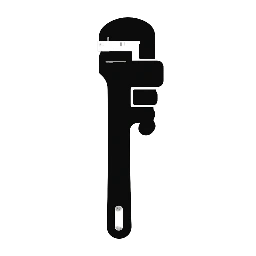Effective dispatching is the backbone of a successful plumbing business. It ensures timely service, optimizes technician routes, and maximizes customer satisfaction. However, dispatching often comes with its unique set of challenges, from unpredictable call volumes to managing technician availability. This guide will walk you through common dispatching hurdles and provide actionable strategies to overcome them, ultimately boosting your plumbing business’s efficiency and profitability.
Common Dispatching Challenges in Plumbing
Before diving into solutions, let’s identify the most frequent pain points faced by plumbing dispatchers:
- Inefficient Routing: Sending technicians on circuitous routes, leading to wasted time, fuel, and delayed arrivals.
- Poor Scheduling: Overbooking technicians, leading to burnout and missed appointments, or underbooking, resulting in lost revenue.
- Lack of Real-time Visibility: Not knowing the exact location or status of technicians, making it difficult to reassign jobs or provide accurate ETAs.
- Emergency Call Management: The unpredictable nature of plumbing emergencies can disrupt pre-planned schedules and strain resources.
- Communication Gaps: Misunderstandings between dispatchers, technicians, and customers leading to errors and frustration.
- Technician Skill Matching: Assigning jobs to technicians who lack the specific skills or tools required for a particular task.
- Manual Processes: Relying on paper schedules, whiteboards, or basic spreadsheets, which are prone to errors and time-consuming.
- Customer Expectations: Customers expect prompt service and accurate information, which can be challenging to deliver with inefficient dispatching.
Strategies to Overcome Dispatching Challenges
Now, let’s explore practical solutions to address these challenges:
1. Embrace Field Service Management (FSM) Software
This is arguably the most impactful step you can take. Modern FSM software is specifically designed to streamline dispatching and other field operations.
- Automated Scheduling & Routing: FSM software can automatically optimize routes based on location, traffic, and job priority, minimizing travel time and fuel costs. It can also suggest optimal schedules, preventing overbooking and ensuring efficient resource allocation.
- Real-time GPS Tracking: Gain instant visibility into your technicians’ locations and status, allowing for quick adjustments to schedules and accurate ETA updates for customers.
- Job Management: Centralize job details, customer information, and service history, making it easy for dispatchers to assign the right technician with the right information.
- Customer Communication: Many FSM solutions offer automated customer notifications (e.g., “Technician on the way”) and self-service portals, reducing inbound calls to dispatch.
- Mobile App for Technicians: Technicians can receive job assignments, update their status, access customer information, and even process payments directly from their mobile devices.
2. Implement Smart Scheduling Practices
Beyond software, adopt strategic scheduling approaches:
- Prioritize Jobs: Categorize jobs (e.g., emergencies, urgent repairs, routine maintenance) and assign them priority levels.
- Buffer Time: Allocate buffer time between appointments to account for unexpected delays, traffic, or longer-than-expected jobs.
- Geographic Zoning: Divide your service area into zones and assign technicians to specific zones to minimize travel time between jobs.
- Skill-Based Dispatching: Tag technicians with their specific skills and certifications within your FSM software to ensure the right technician is dispatched for the right job.
- Predictive Analytics (for advanced systems): Some advanced FSM solutions can use historical data to predict peak times and optimize staffing levels.
3. Enhance Communication Channels
Clear and efficient communication is vital:
- Two-Way Communication with Technicians: Utilize your FSM software’s messaging features or dedicated communication apps to allow dispatchers and technicians to easily exchange information, ask questions, and provide updates.
- Automated Customer Notifications: Set up SMS or email alerts to inform customers about appointment confirmations, technician arrival times, and job completion.
- Regular Team Huddles: Short daily or weekly meetings with dispatchers and technicians can help address recurring issues and improve coordination.
- Standardized Communication Protocols: Establish clear guidelines for how dispatchers and technicians communicate job details, emergencies, and customer interactions.
4. Prepare for Emergencies
Plumbing emergencies are inevitable. Having a plan is key:
- Dedicated Emergency Response Team: Consider having a small team or a rotation of technicians specifically for emergency calls.
- Flexible Scheduling: Build flexibility into your schedule to accommodate urgent calls without completely derailing your planned appointments.
- Pre-allocated Emergency Slots: Reserve a few slots in your daily schedule for potential emergency calls.
- Clear Escalation Procedures: Define a clear process for how emergency calls are handled, from initial contact to dispatch and resolution.
5. Continuous Training and Performance Monitoring
Invest in your team and data:
- Dispatcher Training: Provide ongoing training for dispatchers on how to use FSM software, optimize routes, handle difficult customers, and manage emergencies.
- Technician Training: Ensure technicians are proficient in using their mobile devices for job updates, communication, and reporting.
- Performance Metrics: Track key performance indicators (KPIs) such as average response time, first-time fix rate, technician utilization, and customer satisfaction. Use this data to identify areas for improvement.
- Feedback Loops: Encourage regular feedback between dispatchers and technicians to identify bottlenecks and improve processes.
Benefits of Solving Dispatching Challenges
By implementing these strategies, your plumbing business can realize significant benefits:
- Increased Efficiency: Streamlined operations, reduced travel time, and optimized schedules lead to more jobs completed per day.
- Higher Profitability: Lower fuel costs, increased technician utilization, and fewer missed appointments directly impact your bottom line.
- Improved Customer Satisfaction: Faster response times, accurate ETAs, and better communication lead to happier customers and positive reviews.
- Reduced Stress for Dispatchers & Technicians: Automated processes and clear communication reduce the burden on your team.
- Enhanced Reputation: A reputation for reliable and efficient service will attract more customers and help you stand out from the competition.
- Better Data for Decision-Making: FSM software provides valuable data insights that can inform business decisions and strategic planning.
Conclusion
Solving dispatching challenges in your plumbing business is not just about convenience; it’s about building a more efficient, profitable, and customer-centric operation. While adopting field service management software is a game-changer, combining it with smart scheduling practices, robust communication, and continuous improvement will truly revolutionize your dispatching process. Invest in these strategies, and watch your plumbing business thrive.


Leave a Reply